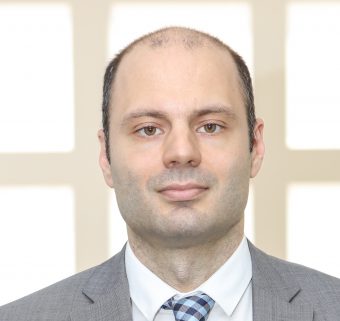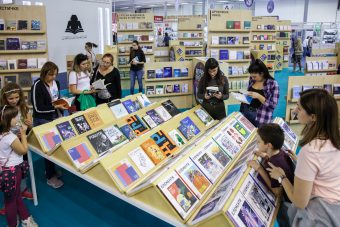It may not matter much to one navigation user on a mobile phone what happens to the electrons in the phone chip after touching the screen. However, for an engineer-researcher, things are a little different. He carefully watches electrons transformed into photons and their cruise through the antenna to the base station and then through the optical cables to the server.To advance and develop a new solution, the innovator must understand the basics, confirms Marko Krstic PhD, Director at the Centre for the Promotion of Science where many researchers have had opportunities to tackle the challenges of developing new technology. It is often necessary to facilitate the mastery of scientific facts through various interesting activities, projects and manifestations, and this is how the Centre for the Promotion of Science serves to achieve the most essential thing – integrating science into social flows.
EP: What is the most crucial goal of the Centre for the Promotion of Science?

Marko Krstic: The mission, and at the same time, the most important goal of the Centre for the Promotion of Science represents a constant in the work of this institution for many years, which is to bridge the gap between science and society by bringing all relevant stakeholders and the general public into the process of research and innovation. The ultimate goal is to integrate society into this process, which provides better insight into the needs of citizens and the opportunity for science to more adequately address societal challenges. In other words, the mission of the Centre for the Promotion of Science is to find a place for science in the wider society, to disseminate the scientific method as the basis of systematic and critical thinking, to promote its useful value in building value based on knowledge and, ultimately, to raise general scientific literacy.
EP: How interested are young people in science and technology in the modern age, and how can we bring them even closer together?
Marko Krstic: Technology is all around us today, providing new, unimaginable opportunities on a daily basis. Science, of course, is hidden behind technology as its driver, but it is far more difficult to unveil science as directly as technology. Therefore, the fascination with technology is understandable and inevitable. Today it gives us the opportunity to easily, with a mere click of a button, often immediately, get information about anything that interests us at that moment, to connect with a person thousands of miles away in seconds, to experience virtual reality through special glasses, to get navigation from any location on the planet to the desired destination … There is no doubt that technological literacy is today an imperative of the society based on it. Still, I firmly believe that the foundations on which this same technology is based should not be neglected.
In the world of “sweet temptations” provided by modern technology, it is not easy to interest the youngest in reflecting on these foundations and presenting their importance. That is why the Centre for the Promotion of Science actively participates in and implements several European projects, such as Scientix, the STEM School Label, which promote the so-called STEM (Science Technology Engineering Mathematics) education. It should contribute to raising the awareness of the importance of these disciplines, increasing students’ interest in the subjects in this group through the development of teaching methods, precisely by using modern technologies, which are becoming effective learning tools and a powerful tool to bring students closer to abstract concepts of science. Thanks to the aforementioned projects, the Centre has formed a network of STEM teachers in Serbia and is proud of the results that have become noticeable even beyond the borders of Serbia.
In focus:
EP: Which of your projects were the most interesting to your visitors?
Marko Krstic: The most visible “project” of the Centre that constantly reaches the largest number of people is our popular science magazine “Elements”, which is published quarterly, with a circulation of about 3,500 copies per issue. Whether it is astronomy, biology, philosophy, mathematics, physics, art, politics or economics, original stories told from different points of view await you on our pages. So, for example, you will read in Elements about the personal adventures of astrophysicists searching for black holes and distant galaxies, as well as for medieval robots, transmitting bacteria in the kitchen, or about the long-hidden but incredibly intertwined paths of science and slavery … Our team that prepares the “Elements” is made up of young and old and experienced science journalists, authors, researchers, essayists and science promoters.
In addition to the magazine, there are major events such as the “May, Month of Mathematics” when every year we pay attention to maths and related sciences through a large number of lectures, panels, workshops, as well as Art & Science, a program sponsored by a major European project through which we connect scientists and artists, with the idea of complementing the creative artistic process with a scientific method, supporting the use of advanced technologies in the process of authentic creative process. A public call from the Centre for the Promotion of Science is also inevitable, through which we fund science promotion and popularisation projects in Serbia, support for the construction of science parks – interactive outdoor classrooms, a large number of children’s workshops and camps.

Finally, there is our Makers Space, an open lab for all creative people looking for a place to realise their ideas. As part of the Science Club of Belgrade, on more than 130 square meters of space, Maker Space members have the technical material, tools, workspace, computers, professional help and advice from colleagues with whom they can develop their projects – from ideas to finished prototypes. I sincerely hope that some of the innovations of the members of our Makers Space will soon see the light of day! I invite, of course, everyone interested to explore more about the activities and programs of the Center on our website www.cpn.rs
EP: Who are the participants and visitors to your workshops, lectures and exhibitions?
Marko Krstic: The range of activities of the Centre for the Promotion of Science is very wide and involves all age groups – from preschool children, through elementary students, high school students, students to teachers and researchers. The Centre also has accredited seminars for teachers and researchers in its portfolio and works closely with research institutions. One thing is for sure, though. To my great pleasure, the curiosity of our youngest participants in the activity is endless.
Interview by: Jelena Cvetic
Read the whole article in the new issue of Energy portal Magazine GRINNOVATIONS, December 2019 – February 2020.



